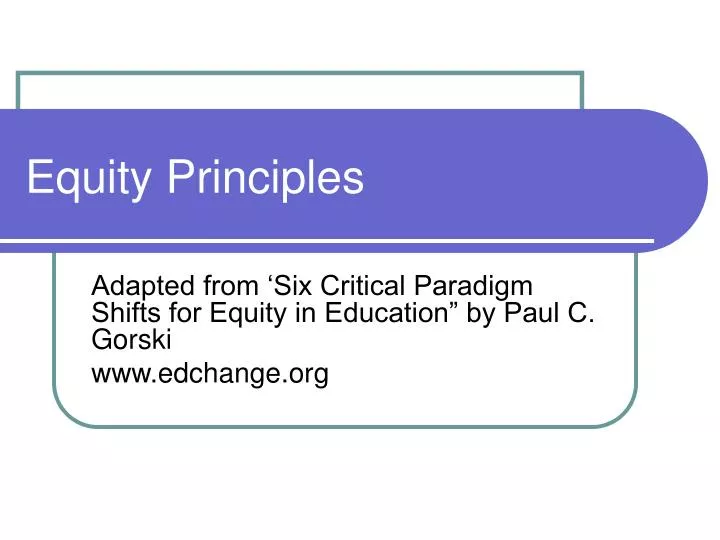How Does Architecture Respond To The Principles Of Social Equity?

In today's world, we live in a society that is constantly evolving with new perspectives, values, and ideas. As such, there is an increasing need to promote equity in all aspects of our lives, including architecture and design. Inclusive architecture is a critical component of creating communities that foster diversity, equity, and inclusion. This article explores the concept of equity in architecture and how it can guide the design of buildings and spaces that are accessible, welcoming, and inclusive to all individuals.
What is Equity in Architecture?
Equity in architecture is an approach towards building design that takes into account the diverse needs of all individuals, irrespective of their race, gender, ethnicity, or socio-economic background. It seeks to promote a greater sense of inclusion, reduce barriers to access, and create built environments that are sensitive to the welfare of the community. Traditional architectural practices often favor certain groups, leaving others behind. However, equity in architecture strives to provide a level playing field for all individuals, by incorporating elements of universal design that meet the needs of diverse groups.
The Benefits of Equity in Architecture
Equity in architecture has several benefits for both individuals and communities. Some of these include:
- Promoting Inclusivity: Inclusive design practices encourage all individuals to use and value the built environment, promoting a greater sense of social inclusion and community building.
- Reducing Barriers to Access: By incorporating universal design elements, we can make buildings and spaces more accessible for people with disabilities, older persons, and caregivers, among others.
- Enhancing Workplace Productivity: By creating spaces that are inclusive and supportive, we can also create a more positive working environment that boosts productivity and reduces stress.
- Improving Public Health: Equity in architecture can enhance public health by, for instance, promoting access to green spaces, safe pedestrian routes, and other elements that promote safety and well-being within communities.
Equity in Architecture in Practice
Equity in architecture is a complex and multidimensional practice that requires a comprehensive approach, involving different stakeholders such as architects, designers, builders, and community members. To achieve equity in architecture, several strategies can be employed:
- User-Centered Design: User-centered design is an approach that involves the participation of end-users in the design process. This strategy can help architects and designers to better understand the needs and preferences of different groups and incorporate them into the design process.
- Community Engagement: Engaging with communities in the design process can help architects and designers to understand the cultural values and preferences of different communities and incorporate them into the design process.
- Universal Design: Universal design is a strategy that involves designing buildings and spaces that are accessible to everyone, regardless of physical ability. This approach can include the use of ramps, wide doors, and other elements that make buildings and spaces more accessible.
- Sustainability: Sustainability is an important element of equity in architecture, as it involves building practices that are environmentally responsible and reduce waste and energy consumption.
FAQs
What is Universal Design?
Universal design is an approach to building design that seeks to create environments that are accessible and useable by all individuals, irrespective of their physical ability. This involves considering the diverse needs of different individuals when designing buildings and spaces, and incorporating elements such as ramps, elevators, and wide doors that make buildings and spaces accessible to all.
Why is Equity Important in Architecture?
Equity in architecture is important as it seeks to create built environments that are equitable, accessible, and welcoming to all individuals, irrespective of their race, gender, ethnicity, or socio-economic background. This promotes a greater sense of social inclusion, community building, and well-being within communities, ultimately enhancing the quality of life for everyone.
What Role Can Architects Play in Creating More Equitable Buildings?
Architects can play a critical role in creating more equitable buildings by embracing the principles of equity in their designs. This involves incorporating elements such as universal design, community engagement, and user-centered design into their practice, and working collaboratively with other stakeholders such as builders, policymakers, and community members to achieve more equitable and accessible built environments.
What is the Connection Between Sustainability and Equity in Architecture?
There is an inherent connection between sustainability and equity in architecture, as both involve designing buildings and spaces that are environmentally responsible and socially equitable. Sustainable design practices seek to reduce the negative impact of the built environment on the natural environment, while equity in architecture seeks to create built environments that are accessible and welcoming to all individuals, ultimately enhancing the quality of life for everyone.
Conclusion
Equity in architecture is an important approach towards building design that seeks to create built environments that are equitable, accessible, and welcoming to all individuals. It involves incorporating universal design, community engagement, user-centered design, and sustainable practices into the design process, ultimately enhancing the quality of life for everyone and promoting a greater sense of social inclusion and community building.



Post a Comment for "How Does Architecture Respond To The Principles Of Social Equity?"